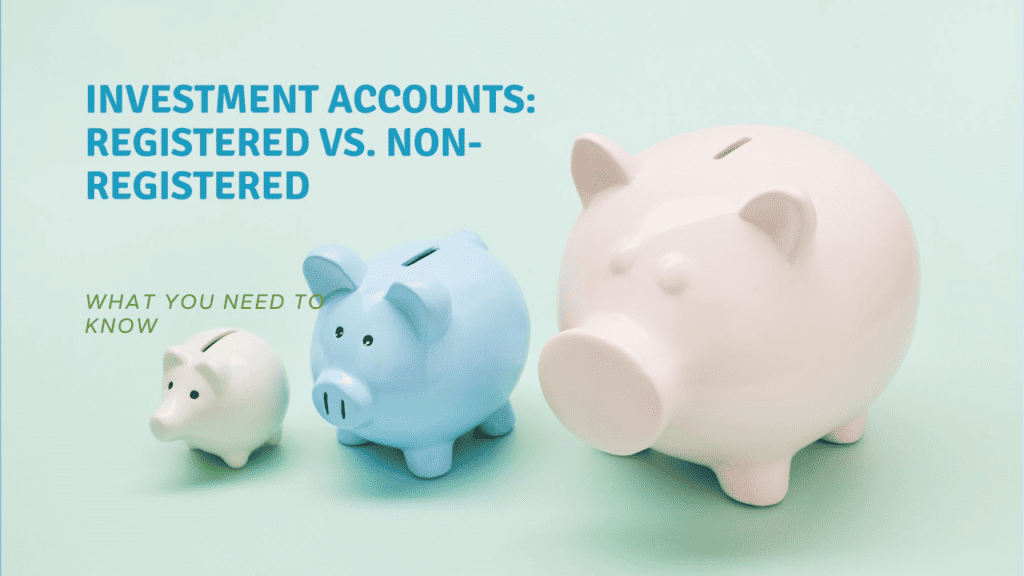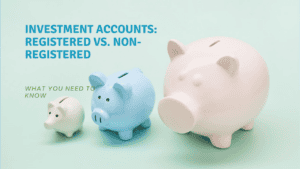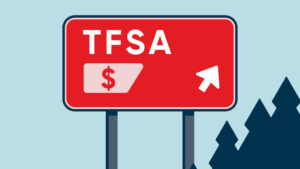Segregated funds vs. mutual funds for estate planning
Read MoreTFSA vs Non-Registered Account: Which One Should You Use in 2025?

Choosing the Right Account to Maximize Your Investment Returns
If you’re planning to invest in 2025, one of the most common questions is: Should I put this money in my TFSA or a non-registered account?
The answer depends on your goals, income, and tax strategy. Both accounts have their place—but understanding the key differences can help you build a more efficient portfolio.
This article compares the TFSA vs non-registered account options and helps you decide which one makes the most sense for your next investment.
What’s the Difference Between a TFSA and a Non-Registered Account?
A Tax-Free Savings Account (TFSA) is a registered account that allows Canadians to earn income and growth without paying any tax on it—ever. You can withdraw money at any time, for any reason, tax-free.
A non-registered investment account is not tax-sheltered. That means any income or gains are taxable—but there are fewer rules, no contribution limits, and more flexibility around how you use the account.
Here’s the key difference:
- In a TFSA, the government gives you a tax advantage.
- In a non-registered account, you’re taxed on earnings like interest, dividends, or capital gains.
When a TFSA Is the Better Option
In 2025, the TFSA limit is $7,000, and if you’ve never contributed before, you may have up to $95,000 in available room. For most investors, this is the first place to put your money.
You should prioritize your TFSA if:
- You haven’t maxed it out yet
- You’re investing for long-term growth
- You expect strong gains (capital appreciation, compounding)
- You want to avoid tax on income or withdrawals
The TFSA is especially powerful for holding:
- Mutual funds
- Segregated funds
- Growth-focused investments
High-interest GICs or bond funds - U.S. or international funds (to avoid foreign withholding tax)
Drawback: You’re limited by the annual contribution room. And if you over-contribute, penalties apply.
When a Non-Registered Account Makes More Sense
Once your TFSA is maxed out—or if you’re investing a large amount—you may need to use a non-registered account.
This option is ideal when:
- You’ve already contributed the max to your TFSA
- You want to invest more than your available TFSA room
- You need the flexibility to write off capital losses
- You’re using investment loans or leveraged strategies
Non-registered accounts allow for:
- Unlimited contributions
- Tax-loss harvesting (claiming losses against gains)
Capital gains taxed at only 50% - Flexibility for advanced strategies
Drawback: You’ll pay tax annually on interest, dividends, and 50% of any capital gains. That can reduce your overall return.
Tax Comparison Example
Let’s say you invest $50,000 and it grows by 6% annually.
- In a TFSA, your gains are 100% tax-free
- In a non-registered account, you’ll owe tax on your earnings each year
Over 10 years, that tax drag can reduce your total return by thousands of dollars.

How to Use Both Accounts Strategically
In reality, many investors should use both accounts—but for different purposes.
Use your TFSA to hold:
- Long-term growth assets
- Investments with high return potential
- Tax-inefficient income (like interest or foreign dividends)
Use your non-registered account to hold:
- Investments that generate capital gains
- Canadian dividend stocks (eligible for dividend tax credit)
- Assets you may want to sell strategically for tax planning
This way, you get the best of both: tax-free growth where it matters, and flexibility where it’s needed.
Should You Move Investments Between the Two?
You can’t directly transfer investments from a non-registered account to a TFSA without triggering a tax event.
However, if you have room in your TFSA, you can:
- Sell the investment in your non-registered account
- Pay any applicable taxes
- Move the cash into your TFSA and repurchase the same (or different) investment
If you sell at a loss, that loss is not claimable if you move the funds into your TFSA, so timing matters.
Final Thoughts
When comparing a TFSA vs non-registered account, the best choice depends on your current contribution room, your long-term goals, and your tax bracket.
If you still have some room in your TFSA, that should be your first step—it gives you tax-free growth with full flexibility. Once your TFSA is maxed, use a non-registered account to continue building your portfolio without contribution limits.
At Ai Financial, we help clients manage both types of accounts—using TFSAs for tax-efficient growth and non-registered accounts for overflow investing or advanced planning. If you’re not sure how to balance the two, we can help build a strategy that fits your financial goals.
Need help deciding where to invest next? Contact Ai Financial to speak with an advisor and get a personalized investment plan for 2025.
More blogs in Financial Tool
Canadian Segregated Funds: Are They For You?
Learn about Canadian segregated funds, what they are, how they...
Read MoreWhat Are Segregated Funds? A Smart Investment with Growth and Guaranteed Protection
Segregated funds vs. mutual funds for estate planning
Read MoreTFSA vs Non-Registered Account: Which One Should You Use in 2025?
Wondering whether to invest through a TFSA or a non-registered...
Read MoreBest TFSA Investment Options in 2025 | AI Financial
You can open a TFSA at any financial institution —...
Read MoreRecent Posts
You may also interested in
How an Investment Loan Helped This Couple Grow $250K into $540K in 7 Years
With just $250K invested over 7 years, this couple built...
Read More$300K in 7 Years: A Story of Investment Loan Strategy and Discipline
No inheritance. No big salary. Just a smart investment loan...
Read MoreShe Achieved Steady Growth with Segregated Funds and Secured a $200,000 Investment Loan!
By investing in segregated funds, Ms. E achieved steady asset...
Read MoreThe Dow Dropped 5,000 Points—He Still Made $36K: How Mr. F Used an Investment Loan to Stay Ahead
While most investors panicked and lost big during the recent...
Read More$17,913 Profit in a Down Market—Here’s How
Profit During a Crash Isn’t Luck—It’s Strategy: Leo Earned $17,913...
Read More










